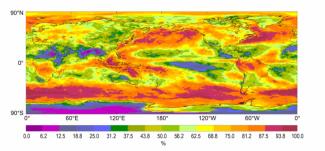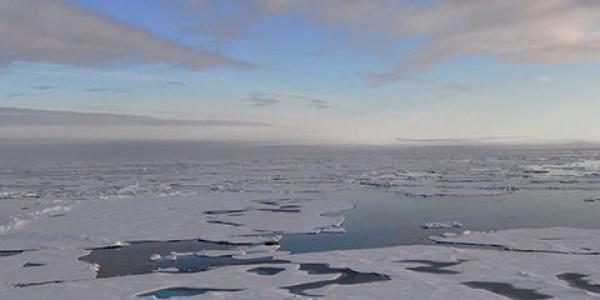
Recent updates expand and improve a significant record of satellite-derived cloud properties that is used to understand weather and climate.
NCEI scientists and partners have reprocessed the International Satellite Cloud Climatology Project (ISCCP). Several cloud properties are recorded in the dataset, such as cloud amount, cloud top pressure and temperature, and cloud water path. The record will soon be expanded through 2015.
The team from NCEI and the project’s originator, atmospheric scientist William Rossow, improved the data by:
- Expanding the period of record
- Using higher resolution satellite data
- Improving snow, ozone, aerosols, and temperature/humidity data
- Creating new value-added products
- Providing the data in Network Common Data Form (netCDF)
The ISCCP products assist the study of how clouds affect weather and climate and contribute to identifying cloud properties and their variations. These variations can affect the amount of the sun's energy reaching Earth's surface as well as keeping Earth's energy from escaping back into space. Clouds also affect the global hydrological cycle, which involves the continuous circulation of water on Earth through evaporation and precipitation.
History of ISCCP
NCEI is the processing center for ISCCP and inherited the system from NASA with the assistance of Rossow, who developed ISCCP at NASA Goddard Institute for Space Studies. Collaborating with NCEI scientists, he led the effort to transition the original ISCCP D-series data to the current H-series.
Prior to NCEI’s involvement, ISCCP began in 1982 as a project to develop a climatology of cloud radiative properties. Since then, thousands of researchers and scientists have used the global cloud information. The goal is to provide quarterly updates.
The cloud data come from more than 30 geosynchronous satellites and several polar orbiters. The data originate from several places around the world, including Japan, several EUMETSAT countries in Europe, and previously from Canada, China, and France.
ISCCP: A Climate Data Record
NCEI manages ISCCP through the Climate Data Record (CDR) program. The program sets high benchmarks for data stewardship. Chiefly, CDRs must meet exemplary standards of consistency, reliability, and scientific defensibility. As with all operational CDRs made available through NCEI, ISCCP must meet quality standards recommended by the National Academy of Sciences and other expert organizations.
ISCCP H-series data are accessible online and via request. The latest information about ISCCP status will be updated at the ISCCP Community News Forum. Questions and inquiries should be sent to the ISCCP Community Q&A forum.




